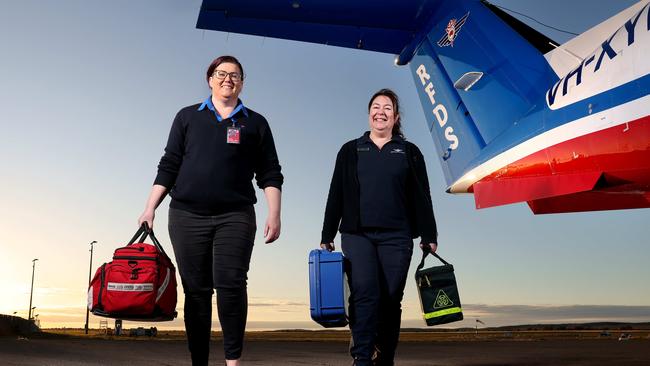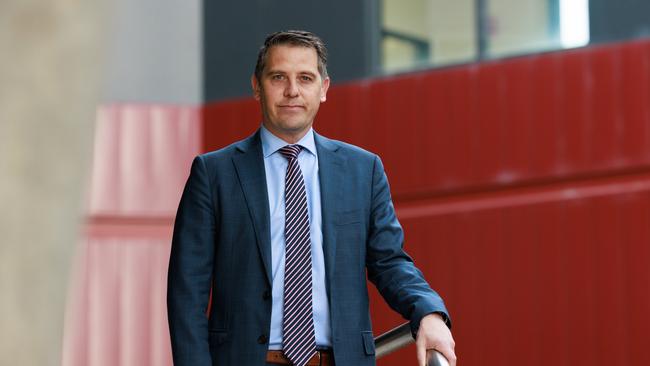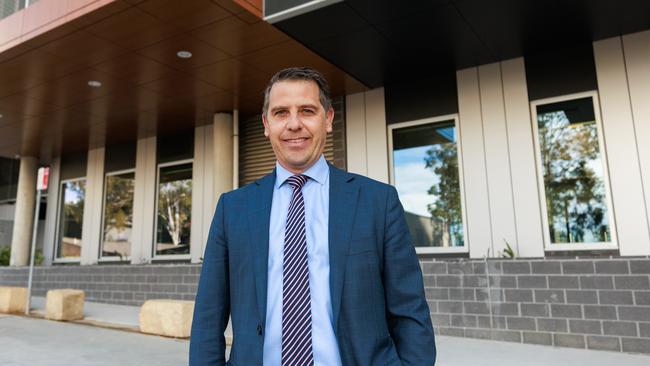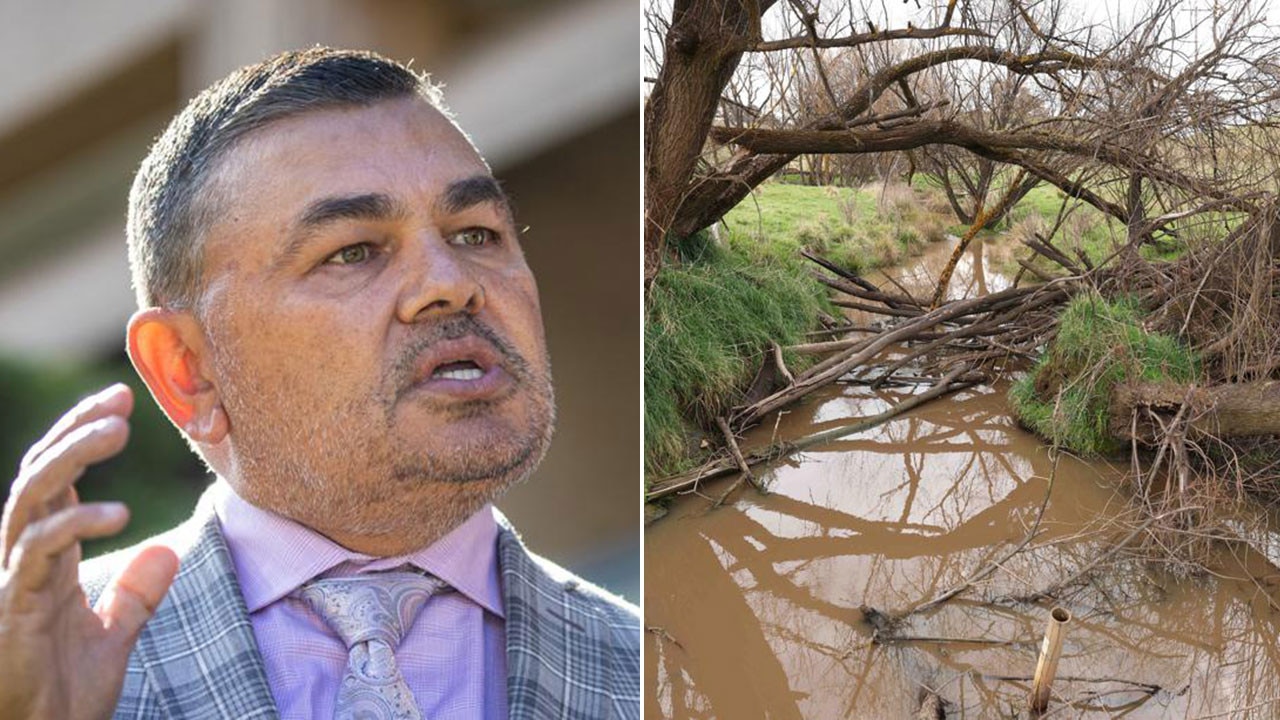Shock health divide in Australia exposed in new report
The shocking health divide in Australia has been exposed, with Aussies in one part of the country 10 times more like to die from some of our biggest killers.

Bush Summit
Don't miss out on the headlines from Bush Summit. Followed categories will be added to My News.
Living in rural and remote Australia is bad for your health, with country Aussies 10 times more likely to die from ischaemic heart disease than their city cousins.
The shocking health divide between the city and bush has been exposed in a new report by the Royal Flying Doctor Service, with deaths from preventable heart, stroke and vascular disease up to 1.4 times higher in remote areas.
Hospitalisation rates for heart, stroke and vascular disease are also 1.4 times higher for remote and very remote populations.
Limited access to health services was a factor in the poor outcomes, with the Best of the Bush report finding more than 22,000 people in remote Australia had no access to any healthcare service within a 60-minute drive of their home.
The organisation is calling for additional government funding and expanded primary healthcare services in rural and remote areas, specifically around cardiac health.

This includes an increased use of telehealth to supplement face-to-face healthcare.
“Rural and remote communities need rural and remote solutions that are designed with local communities to respond to need,” RFDS executive director Frank Quinlan said.
“This will only be achieved through the availability of adequate, equitable and appropriately targeted primary healthcare”.
RFDS provides around 35,000 aeromedical trips per year, which include nearly 9000 patients suffering heart, stroke and vascular illnesses.
Rural Queenslanders required the most transfers, followed by WA and SA.
People aged in their 60s and 70s made up the biggest proportion of patients who needed to be flown to help.
Men were also worse off, being twice as likely to be evacuated for heart disease and stroke than women.
Indigenous Australians made up 16.8 per cent of all retrievals compared to non-Indigenous Australians who made up 75.6 per cent. They were also 1.8 times more likely to be hospitalised and 1.8 times more likely to die from heart disease and stroke.

“Heart, stroke and vascular disease rates worsen by remoteness and socio-economic status and most aeromedical retrievals for heart, stroke, and vascular disease came from areas without healthcare service provision, including lack of cardiac services and chronic disease management,” Mr Quinlan said.
The report found the divide between bush and city was evident in the number of hospitalisations in general. Australians in remote areas are 2.8 times more likely to be hospitalised and 2.5 times more likely to go to hospital for a preventable illness.
Access to stroke care was not much better. Only three per cent of stroke victims in remote and rural Australia received care at a specialist stroke unit, as opposed to 77 per cent of those living in major cities.
Data revealed in an independent report commissioned by the National Rural Health Alliance found that for every person living in rural Australia there is an annual deficit in health care spending of $850 per year. This means a total health spending deficit of $6.5 billion when compared to major cities.
Dubbo’s Macquarie Homestay in central-west NSW is a not-for-profit that provides accommodation to patients who have no choice but to travel hours for medical appointments.
As Dubbo is the only town for kilometres with dedicated birthing suites or a cancer centre, pregnant women will often travel many hours to get to the hospital and will need a place to stay.
Macquarie Homestay chief executive Rod Crowfoot said he often had mothers drive five hours from Lightning Ridge, yet with limited funding there was not always enough space.
“We’ve had some mums stay with us for 20 weeks till full term, if it’s a complicated birth - so the time can be quite extensive,” he said.
“On a bad day we’re often forced to turn away a dozen people a day because we just don’t have the space and the demand is so high.”
Minister vows to fight for rural care
The NSW government has increased the amount spent on virtual health for rural areas with additional funding on telehealth expansions this year costing more than $8 million.
This comes as the NSW Regional Health Minister Ryan Park says the single employer model for rural GPs needs to be further expanded to incentivise doctors to move to the regions.
Sitting down with The Daily Telegraph, Mr Park said the workforce shortage was by far the biggest healthcare challenge facing rural communities, pointing to increased virtual care and workforce incentives as key areas for improvement.
Mr Park said incentivising more GPs to move to rural areas by further expanding the single employer model for doctors was something he was prepared to “agitate” the Federal government for.
The GP single-employer model provides a pathway for doctors wanting to become rural generalists, by allowing them to train in both state-run hospitals and privately run clinics while still allowing them to keep leave and entitlements. In a joint Commonwealth-NSW announcement in July, 80 GPs under this model were announced.

Mr Park said 80 more doctors was not enough.
“We’ll have to do more … I’m going to continue to advocate, agitate and annoy for this because I think it is a model, while not being a silver bullet that addresses some of the structural concerns,” he said.
One of the largest areas of improvement Mr Park believes will help create more equitable health care between the city and the bush is through an aggressive expansion of virtual health care. He said the increased funding for virtual health programs was just the beginning.
This year more than five virtual care programs have received additional funding, including $950,000 for a Virtual Rural Generalist Service pilot announced today which allows doctors and hospitals in remote communities to access the expertise of specialists across the state 24 hours a day.

Specialist virtual health clinics for stroke victims, pregnant mothers, sick kids and people suffering fractures and broken bones have also been set up across the state.
The uptake of virtual care has also surged, making up 22 per cent of appointments in 2022 up from 18 per cent during the height of Covid in 2021.
Opposition Regional Health spokeswoman Bronnie Taylor agrees an expansion of telehealth services has already started improving health access.
“The success of the Telestroke service is absolutely phenomenal,” she said.
“You now have situations in rural NSW where people can actually get stroke treatment before they would if they were in a metro area.”
Broken Hill resident Dylan Branch, 19, said he was amazed by the quality of care he received from the virtual fracture clinic after fracturing his foot playing AFL.
As Broken Hill has very few doctors in the town he would have had to be transferred over an hour to the nearest centre.
“It’s really hard to get an appointment normally, they were just great and I only had to get looked at by the nurses once,” he said.
“Not to mention it was free and if I’d had to drive to see a doctor I would have had to pay a lot.”




